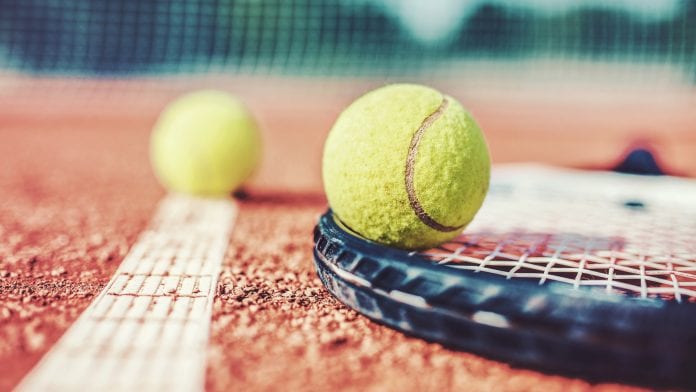
A new study suggests playing tennis beats going to the gym when it comes to preventing muscle and bone problems in later life
In the UK, one in four adults suffer from ‘musculoskeletal’ problems. Issues include joint pain from osteoarthritis, bones weakened by osteoporosis as well as the muscle-wasting condition sarcopenia. Experts at Liverpool Hope University, UK, say that playing tennis can help prevent these conditions particularly among those aged 50 and over.
Around 9.6 million adults and 12,000 children in the UK suffer from one of the many musculoskeletal issues, according to NHS statistics. These issues are account for almost a third (30%) of all GP consultations, which is adding to the strain on the NHS. Dr Matthew Jackson, exercise physiologist at Liverpool Hope University, advises that a simple change of sport can help to alter the landscape of musculoskeletal health in the UK.
Jackson compared two healthy groups – one who played tennis regularly and another who got their NHS-recommended 150 minutes of exercise per week through activities like running, cycling and going to the gym. The results, published in Sports Health, revealed that the tennis players had ‘significantly greater’ musculoskeletal health than the people who went to the gym, went running or cycling.
Jackson said: “The findings suggest tennis is an excellent activity mode to promote musculoskeletal health and should, therefore, be more frequently recommended as a viable alternative to existing physical activity guidelines.”
The study involved 90 participants (43 tennis players and 47 regular exercisers) aged between 18 and 65. The participants ‘musculoskeletal function’ was measured through a series of tests – including things like handgrip strength, running, knee-flex and extension ability – that analysed body composition, upper body strength, lower body strength and muscle fatigue. Plus, aerobic endurance and cardiovascular fitness through ‘VO2 max’ oxygen uptake were also analysed.
The results revealed that the tennis players enjoyed a more favourable BMI and displayed better upper body and lower extremity function than the gym-goers who are those not used to holding a racket.
Jackson explains: “As we age, we lose muscle mass and we lose bone mineral density over time. It happens to all of us. But when you reach 50 years old, the process accelerates much quicker and we need to target and advise this demographic about the dangers. Lots of people are active in their younger years but by the time they reach their 40s, they’re giving up and often go a decade or so without doing anything.
“And we want to get people in those age groups as active as possible to avoid things like osteoarthritis, osteoporosis and sarcopenia – as being inactive is likely to make you obese, which can exacerbate the symptoms of all three. Tennis is great as an all-round sport. It targets the cardiovascular system but also improves your muscle mass and your bone mineral density because it’s a weight-bearing sport that incorporates aspects of power and strength.”
Sarcopenia, a muscle-wasting disease can be particularly debilitating, as patients lose the ability to perform their normal routine. However, Jackson says this is reversible, which gives many sufferers hope.
Jackson says: “There’s an assumption that you can’t do anything with those suffering severe muscle loss in their later years but sarcopenia is reversible. Older people are often wrapped in cotton wool but they’re actually capable of doing much more than you’d think in terms of exercise.”







